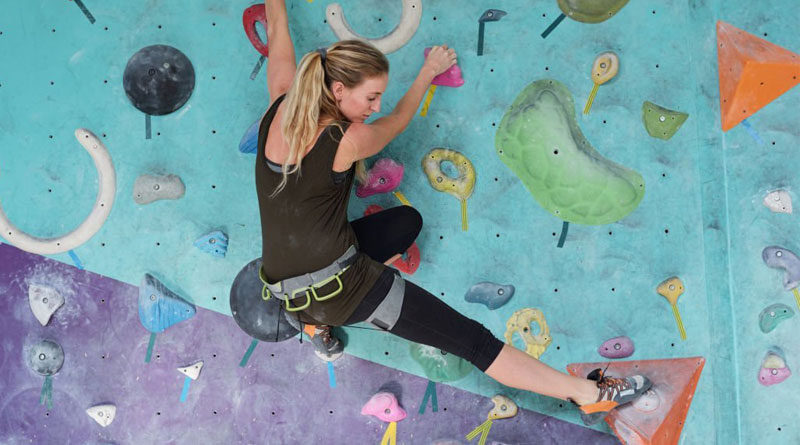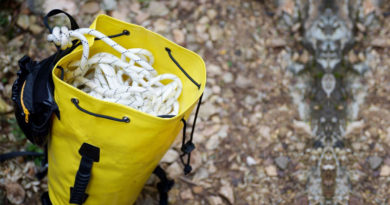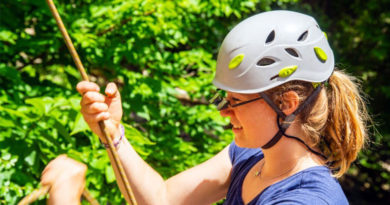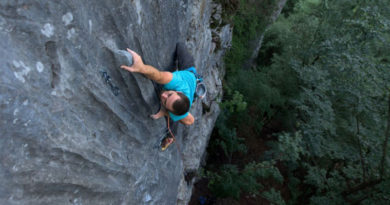What to Wear to a Rock Climbing Gym?
The significance of appropriate clothing is one aspect of climbing that is often disregarded. Wearing the right clothes can keep you safe and comfortable. It also improve your performance on the wall. For beginners in particular, selecting the appropriate attire for a rock climbing gym can be challenging. So, what exactly you should wear in a climbing gym so that you can concentrate more on your climbing and worry less about your clothes?
Comfortable Clothing
Comfort is key when you are climbing. Look for clothes that allows for a full range of motion and won’t restrict your movement. Here are some recommended clothing items for rock climbing:
- Tops: A breathable and moisture-wicking top is a must-have for any climber. Look for tops made of materials like polyester or merino wool. They help keep you cool and dry during your climbs. Never use cotton because it absorb moisture, which can make you feel uncomfortable.
- Pants: For pants, opt for stretchy and durable materials such as nylon or spandex. These materials allow you to move freely and won’t restrict your movement. Avoid wearing loose-fitting pants, as they can get caught on holds or create unnecessary drag.
- Sports Bra: For women, a supportive sports bra is essential. Look for bras that provide good support and comfort. A breathable and moisture-wicking material is a huge plus.
- Socks: Merino wool socks work great every time. Extra cushioning in the heel and toe area is bonus because it provides extra comfort and support.
Overall, wearing comfortable clothing will allow you to focus on your climb and perform at your best.
Climbing Shoes
The next thing to think about is your climbing shoes. If you’re mostly bouldering, choose a pair of shoes with more aggressive and downturned designs for better grip and precision. If you’re doing mostly sport climbing or top roping, look for shoes with flatter soles for more comfort during long climbs.
Protective Gear
Protective gear is essential for rock climbing to prevent injuries in case of falls or accidents.
Helmet: A climbing helmet is always your best friend whether you are climbing indoors or outdoors. A helmet will protect your head from falling debris, accidental falls, or hitting your head on a rock or a hold.
Gloves: Climbing gloves protect your hands from getting cuts, blisters, or bruises. They also provide extra grip and traction on the rocks or holds.
Knee Pads: Knee pads protect your knees from scrapes and bruises. They also provide some extra cushioning and support to your knees. Look for knee pads that are made of durable materials and fit comfortably.
Layer for Temperature Control
Rock climbing gyms can have varying temperatures depending on the season, location, and activity level. It’s important to dress in layers to regulate your body temperature and stay comfortable during your climb.
- Base Layer: The function of a base layer is to wick moisture from your body. It is the layer closest to your skin so must be made of moisture-wicking and breathable materials such as polyester or merino wool. This layer will help regulate your body temperature and keep you dry and comfortable.
- Mid Layer: The mid-layer provides insulation and warmth. Look for materials such as fleece or wool that provide warmth without adding bulk. You can add or remove mid-layer depending on the temperature.
- Outer Layer: The outer layer protects you from the elements. Look for a jacket that is lightweight and waterproof or water-resistant.
- Accessories: You can choose to wear hats and gloves. Scarves also provide additional warmth and protection. Look for accessories that are made of moisture-wicking and breathable materials and fit well.
Overall, dressing in layers allows you to adjust your clothing to your activity level and the weather conditions, keeping you comfortable and safe while you climb.
Choose the Right Colors
The color of your clothes may not seem like a significant factor but it certainly affects your climbing experience.
- High-Visibility Colors: High-visibility colors are always better. Bright colors such as yellow, orange, or green can make you more visible to other climbers and staff in the gym. This can help reduce accidents and make it easier for staff to locate you.
- Dark Colors: Dark colors such as black, navy, or dark gray can make it harder for staff to see you, especially in dimly lit areas of the gym. Dark colors can also absorb heat and make you feel warmer, which may not be ideal in warmer gym environments.
- Light Colors: Light colors such as white or light gray can reflect heat and make you feel cooler, which may be ideal in warmer gym environments. However, light colors can show sweat stains more easily, which may not be ideal if you’re self-conscious about sweat.
- Personal Preference: Ultimately, the color of your climbing outfit is a personal preference. Choose colors that make you feel confident, comfortable, and happy. You may also want to consider matching your outfit to your climbing shoes or gear for a coordinated look.
In conclusion, choosing the right colors for your rock climbing gym outfit can affect your safety, comfort, and confidence while you climb. Consider high-visibility colors, dark colors, light colors, and your personal preference when selecting colors for your climbing outfit.
Conclusion
In conclusion, selecting the appropriate attire and equipment for a rock climbing gym can greatly enhance your performance and experience. It is crucial to wear comfortable, flexible clothing, as well as safety equipment like gloves and helmets. Layering can help you control your body temperature, and climbing shoes are essential for grip, traction, and support. Last but not least, the right color scheme for your climbing attire can influence your security and self-assurance while you are climbing. You’ll be prepared to take on any climbing challenge in the gym with ease, safety, and style if you keep these pointers in mind.




